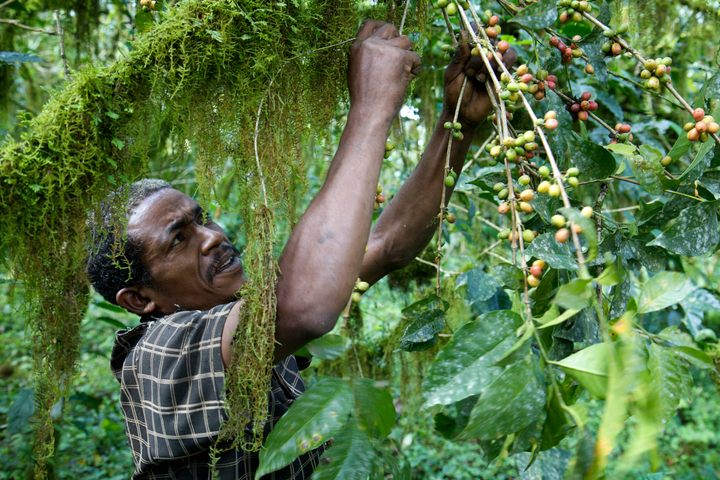

Inside Ethiopia’s Endangered Wild-Coffee Forests
The demise of Arabica’s birthplace would be a catastrophe for the industry.
Walking into the montane cloud forests with a small group of coffee collectors, ducking under mossy, low-hanging branches, ropey lianas, and slender wild coffee trees broken by baboons trying to reach their sweet fruit, is like returning to a time when rivers ran unimpeded and great forests ruled the land. Hazy sunlight pierces the dense canopy. Black-and-white colobus monkeys sit quietly observing from above, heavy silvery-cheeked hornbills lift off from treetops with the deep whooshing of wingbeats, and electric-green mambas slither unseen. The steady drip of water from the morning rain plops down on coffee trees that are merely one part of the rich, biodiverse understory.
These coffee forests, in Ethiopia’s Kafa region, some 300 miles southwest of Addis Ababa, are the heart of coffee’s birthplace, and one of the few places where it still exists in the wild. Growing spontaneously under the canopy of trees, forest coffee is neither cultivated nor maintained, and a complex system of ancestral entitlements regulates who can gather the coffee berries when they ripen in autumn.
While these fruits look similar to their cultivated cousins, the trees themselves appear different. Ferns, colorful epiphytic orchids, and leafy climbers wrap around the tall, slender trees that reach up towards the available light. Bearded festoons of silvery-green moss hang from their slender branches. Leaves are sparse, and coffee fruits few. With most of their energy going into simply surviving, they grow slow and produce just enough for the species to continue.

Once the collectors arrive at the part of the forest whose coffee they can gather, they reach up and double over nimble branches, spinning the berries between thumb and fingers to separate them from the short stem and dropping them into buckets that hang around their necks. They take perfect, deep-red coffee fruits, but also unripe green and yellow ones and the overripe purple ones, which might be claimed by baboons, birds, or rainstorms if left for later.
I first journeyed into these isolated forests when writing a book: Where the Wild Coffee Grows. I came to see coffee in its original home, to see wild Arabica trees which, I learned, are at risk of disappearing entirely within 60 years. That would be devastating to the communities that live in and around Ethiopia’s coffee forests. It also sends fear into the coffee-soaked hearts of aficionados, breeders, and farmers around the globe.
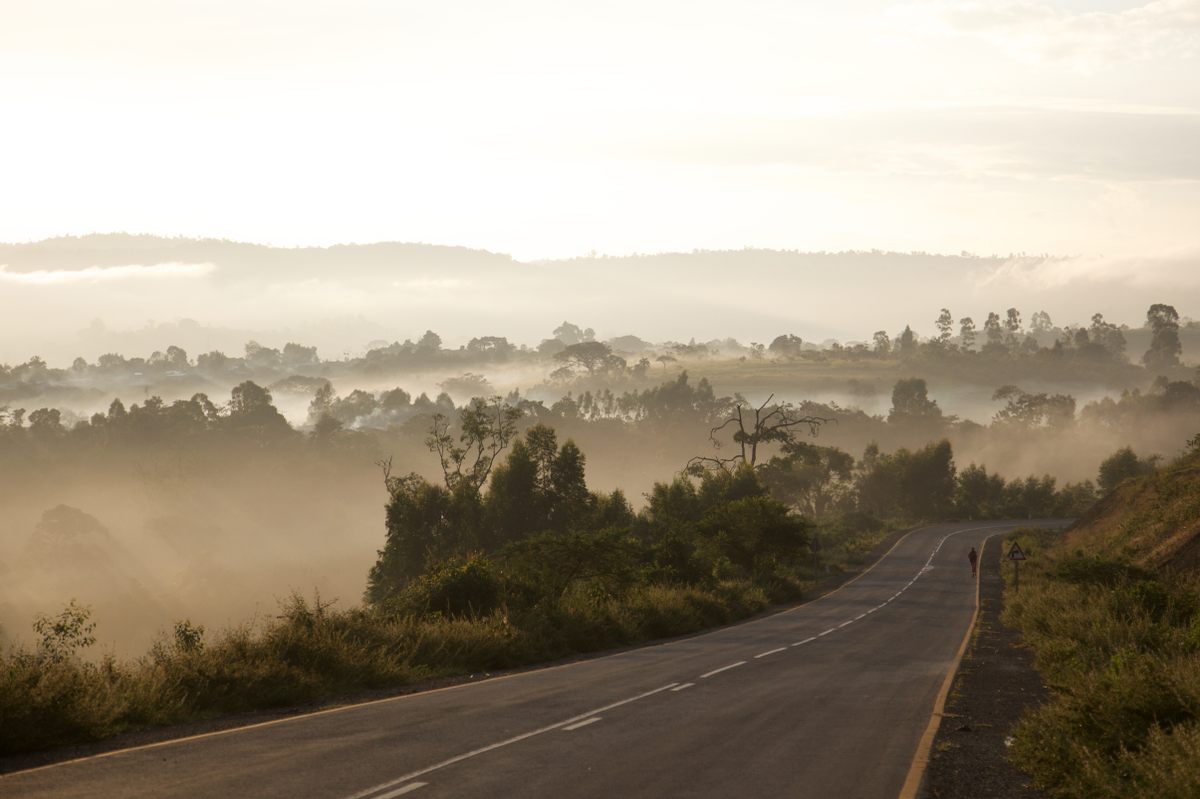
There are two commercial varieties of coffee, Arabica (Coffea arabica) and its more tropical cousin, Robusta (Coffea canephora). In 2019, the world produced some 22.6 billion pounds of coffee, 60 percent of that the higher-valued, more-nuanced Arabica. Most of the world has just a single way to farm it—in large, orderly fields of heavily-laden trees and often little shade.
In Ethiopia such plantations are rare. The most common method is “garden coffee” grown on small lots or family compounds. Yirgacheffe, Sidamo, and Harar—the country’s best-known producing areas—rely on this type of cultivation. In Kafa and around the southwest, people gather “forest coffee” deep in the woodlands where it grows undisturbed, or boost output from trees along the forest edges by cutting back surrounding vegetation, trimming trees, and thinning the canopy. This is known as “semi-forest coffee.” Locals make little distinction between the two types. Sellers in the sprawling Saturday market in Bonga, Kafa’s lowkey capital, say both are wof zerash, or sown by the birds.
While the wildness of these forest coffees is unique, another factor distinguishes them from much of the globe’s Arabica: the devastating fungus known as leaf rust is kept naturally in check.
Latin America produces almost 85 percent of the world’s Arabica, and its coffee is in trouble. Arabica coffee is self-pollinating, pollinating itself about 95 percent of the time, and it spread around the globe from a literal handful of seeds. As a result, cultivated Arabica is genetically weak and unable to withstand or adapt to the diseases and changing climate that are battering production. Coffee leaf rust, which has decimated coffee-growing regions before, wiping out the entire industry of Ceylon (now Sri Lanka) in the late-19th century, has sent Latin America’s industry into a tailspin.
The greater the genetic diversity of a plant species, the greater chances it has to adapt to such threats. Or even offer attractive traits for the market. For coffee that means higher yields, interesting new flavors, or—in something of a holy grail—naturally decaffeinated beans. The diversity in Ethiopia, especially deep in the forests, is richer than anywhere else—some have estimated that Ethiopia possesses 99.8 percent of the genetic diversity of Arabica. These cloud forests hold not just the origins of Arabica coffee, but a key to the industry’s future.
Ethiopia has one of the fastest growing populations in the world. In 2000 it had 66 million people; today there are 115 million. With such growth comes the need for more farmland and the continual threat of deforestation. In the early-20th century, forests covered about 35 percent of the country. Today it is around 4 percent.
For decades, deforestation looked ready to claim the coffee forests, along with the genetic diversity they safeguarded. While scientists are preserving wild varieties of other important crops in seed banks and gene reserves, coffee seeds do not store well using such conventional methods. The best place to safeguard their genetic resources is in their original home.
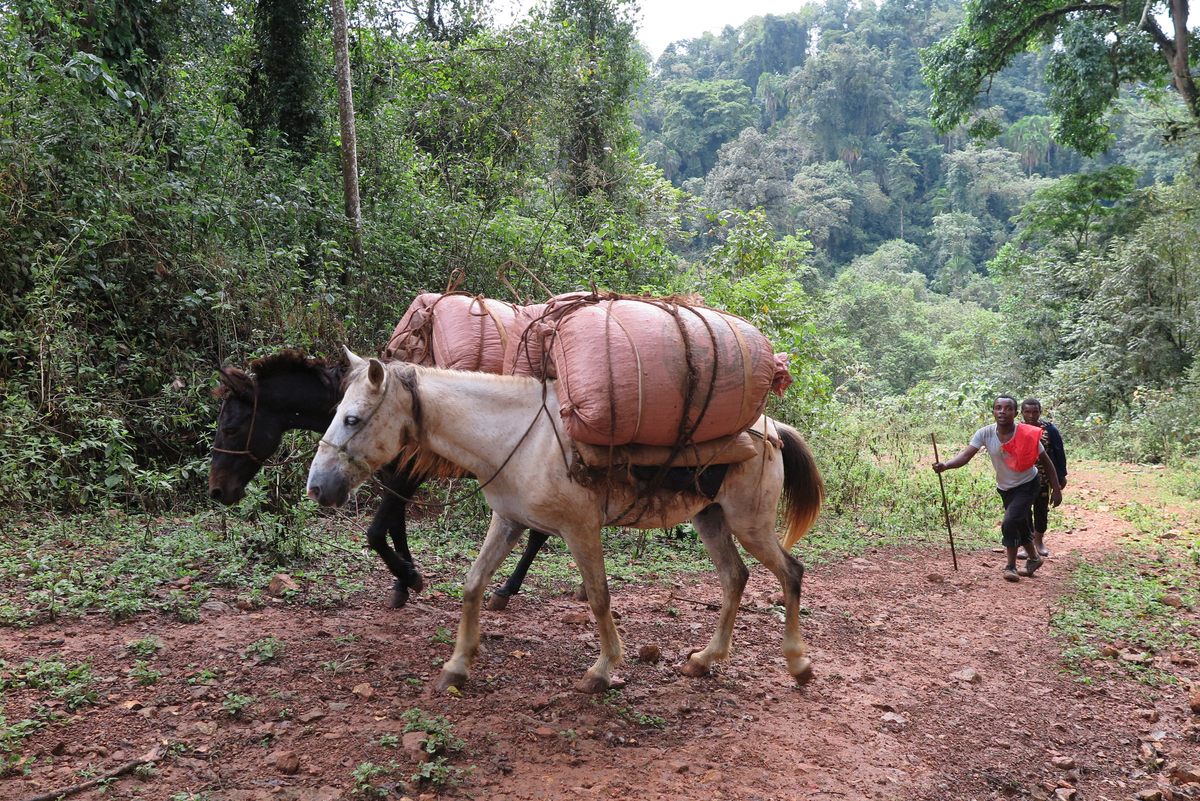
But around Kafa at least, says Mesfin Tekle, the leading local expert on Kafa’s coffee forests, deforestation has been brought under control. That is in part from Participatory Forest Management, a popular program that transfers the right to manage and exploit a forest’s renewable resources—wild coffee, honey, spices such as cardamom—from the government to a local community. In return, the community is responsible for its conservation.
More protection came in 2010 when UNESCO designated 3,000 square miles the Kafa Biosphere Reserve, covering two-thirds of Kafa in a trio of zones with distinctive rules on access and activities. Home to some 650,000 people, the Reserve is 55 percent forest, including one-quarter coffee forest. That same year, UNESCO added the Yayu Coffee Forest Biosphere Reserve to its protected list, and in 2012, the nearby Sheka Forest Biosphere Reserve, where coffee also grows naturally.
Today, wild Arabica’s greatest threat is climate change. Highly sensitive, it can only survive within a narrow band of conditions. Aaron Davis, a senior research leader at the Royal Botanic Gardens, Kew, and the world’s foremost authority of coffee and climate change, has forecasted that the places where wild coffee can grow will decrease by 65 percent by 2080. That’s the best-case scenario. The worst-case showed a 99.7 percent reduction, with wild Arabica tree populations dropping by 40 to 99 percent.
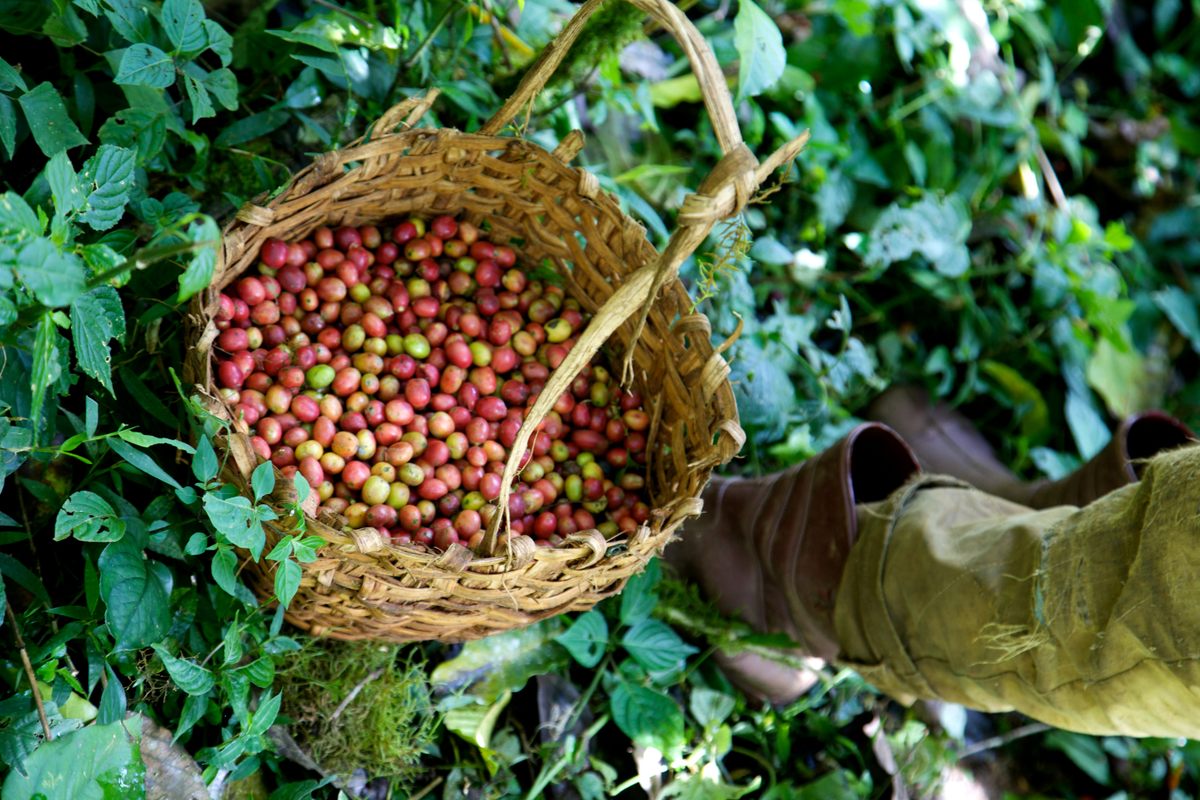
With the gathered coffee loaded into canvas sacks and balanced on their heads, the foragers walk back out of the forest, stepping through a bramble of twigs and under branches until they find a thin trail—marked in places by fresh buffalo tracks and baboon scat filled with pale coffee beans—that will lead them back to their hamlet.
Coffee is seemingly everywhere. Along with banana-like enset and staples such as potatoes and beans, most of the conical, wattle-and-daub huts have several coffee trees, often uprooted as saplings from the forest floor. Most homes have a rudimentary raised bamboo bed for drying their own coffee. The foragers place their newly picked fruits on these in a single layer. It takes a week or two for them to dry into leathery brown pods. (Each contains a pair of oval beans.) While some gets sold at market, much is kept to brew at home.
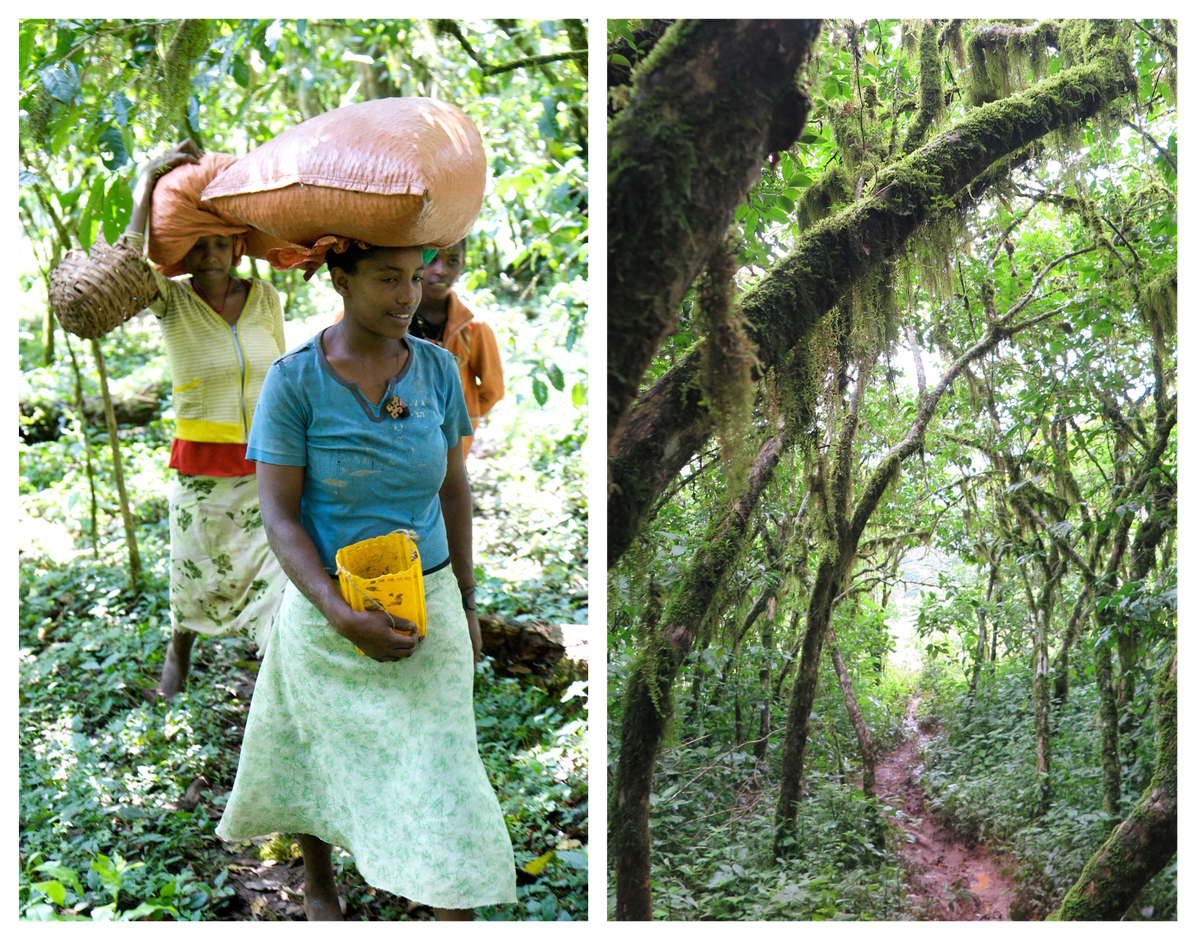
Coffee in Ethiopia is drunk seemingly all the time, nowhere more so than around Kafa’s coffee forests. Kids begin to sip it when they start walking and talking, and adults drink numerous cups a day. Locals also cook the fresh coffee fruits in butter, crunch on roasted beans like corn nuts, and prepare infusions with coffee leaves. Coffee-related activities are the livelihood for about one-quarter of Ethiopia’s population. In Kafa’s highland coffee forests, that number is nearly 100 percent.
Despite Ethiopia’s coffee heritage, its brews have only recently gained the recognition they deserve. Ethiopian coffees are now internationally celebrated for their bright fruity and floral flavors, from the juicy blueberries of a Guji to the lemony and jasmine flavors of a Yirgacheffe, and a handful of high-end roasters have begun to offer sublime wild-forest coffee. The German developmental agency GIZ works with nearly 60 cooperatives, including the Kafa Forest Coffee Cooperatives’ Union, while Union Hand-Roasted Coffee, in East London, partnered with Aaron Davis and Kew Gardens to offer Yayu forest coffee. These projects aim to increase Ethiopian farmers’ earnings while protecting coffee forests and giving more people a taste of these unique coffees. Brewing Union’s freshly-ground Yayu forest coffee with a Chemex or V60 filter is to sample hints of citruses, plums, and chocolates.
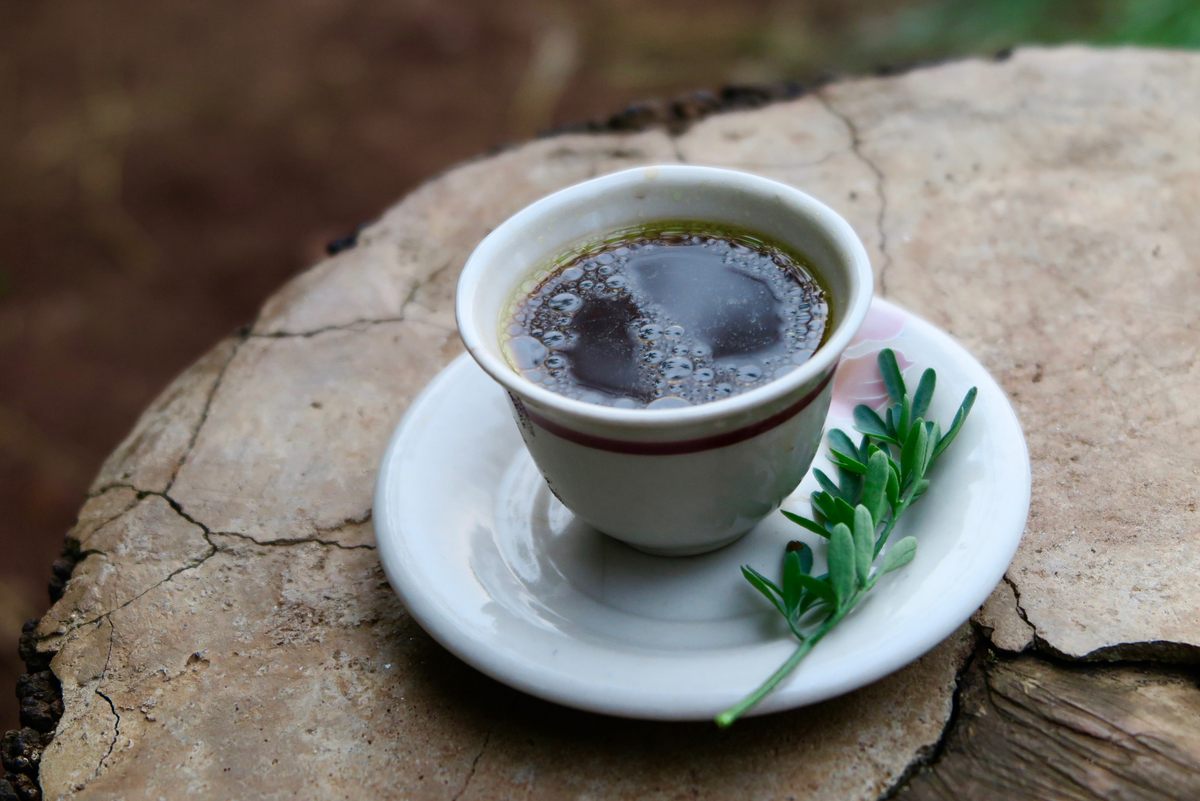
A cup of true wild coffee drunk on the edge of the forest, though, is different. It usually has more uneven flavors—a result of the fruits’ varying ripeness and the manner of drying.
Brewed in a bulbous, terracotta jebena coffeepot over coals and drunk from tiny, handleless cups, it combines notes of citrus and stone fruits from drying naturally in the pod, but also at times a fermented winey-ness from overripe fruits and grassy astringency from immature ones. There is something of the dusty, mossy aromas of the woodland that clings to it, too. It tastes—thrillingly—of the forest where it grows.
You can join the conversation about this and other stories in the Atlas Obscura Community Forums.
Gastro Obscura covers the world’s most wondrous food and drink.
Sign up for our regular newsletter.
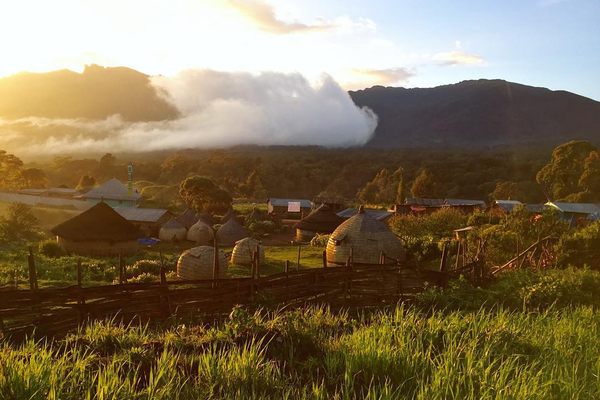

















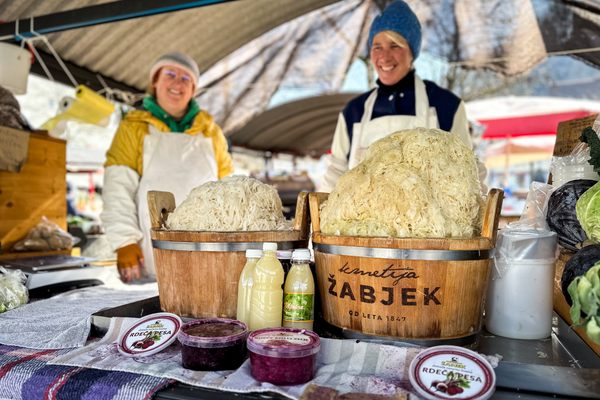

Follow us on Twitter to get the latest on the world's hidden wonders.
Like us on Facebook to get the latest on the world's hidden wonders.
Follow us on Twitter Like us on Facebook